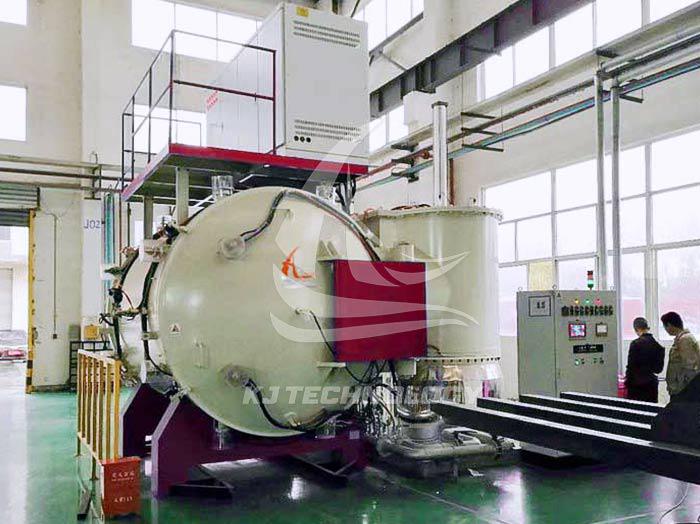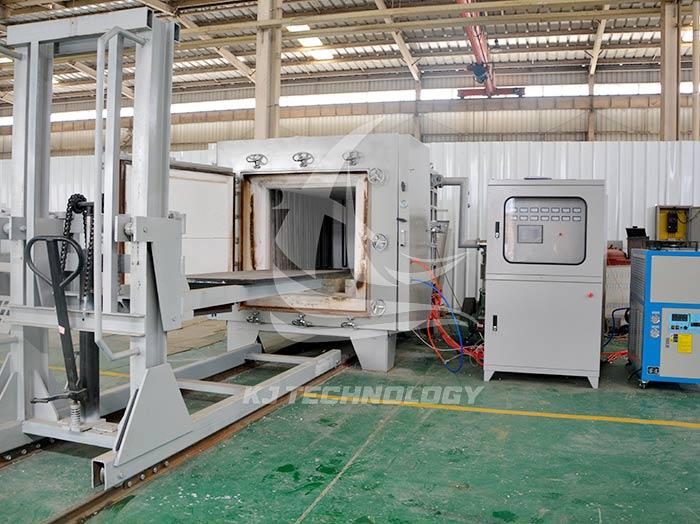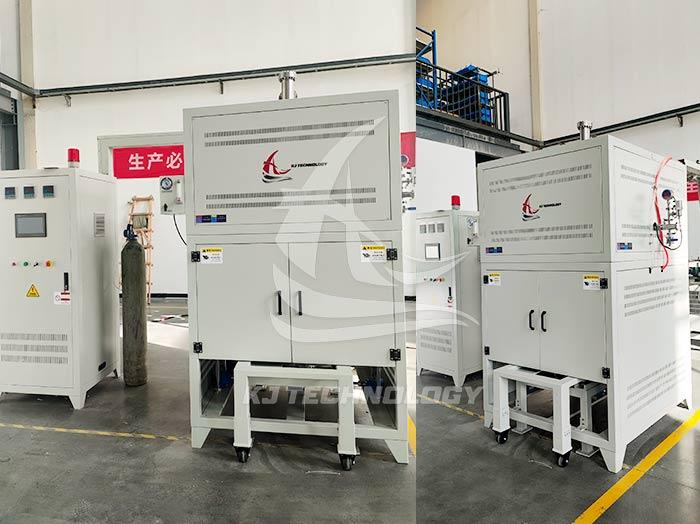Laboratory graphite furnace
 07-22-2025 Author: KJ technology
07-22-2025 Author: KJ technology
Laboratory Graphite Furnace: Core Equipment and Maintenance Guide for High Temperature Experiments
1. Core functions and classification of graphite furnaces
Graphite furnace is a key equipment used for high-temperature heat treatment in laboratories, and its core functions include:
High temperature environment creation: By using resistance heating or induction heating, a stable high temperature field (usually up to 1000-3000 ℃) is provided to meet the needs of material graphitization, pyrolysis, sintering, etc.
Atmosphere control: Supports inert gases (such as nitrogen, argon) or vacuum environments to prevent sample oxidation, suitable for anaerobic experimental conditions.
Accurate temperature control: equipped with an intelligent temperature control system, supporting segmented programming for temperature rise, ensuring temperature accuracy (within ± 2 ℃) during the experimental process.
According to their structure and application scenarios, graphite furnaces can be divided into:
Vertical intermittent graphite furnace: suitable for laboratory small batch sample processing, flexible operation, high temperature uniformity.
High temperature graphite furnace: supports higher temperatures (such as 3000 ℃) and vacuum environments, commonly used in industrial applications such as semiconductor manufacturing and ceramic sintering.
2. Key points for daily maintenance of graphite furnace
a. Cleaning and dust treatment
Internal cleaning:
After the experiment, wait for the furnace to cool to room temperature and use a soft bristled brush or vacuum cleaner to remove residues (such as oxides and sample debris), avoiding the use of corrosive solvents.
Regularly clean the ventilation openings and filters to prevent dust accumulation from affecting heat dissipation efficiency.
Furnace and light path maintenance:
Carbon deposits are prone to occur in graphite furnaces due to high temperatures, and it is necessary to wipe them with anhydrous ethanol or specialized cleaning agents to avoid contamination of the temperature control mirror and temperature control failure.
If the quartz window panel is contaminated by the sample, it needs to be removed and wiped with a soft alcohol cloth to ensure transparency.
b. Heating system inspection
Heating element maintenance:
Check the graphite heating element (such as resistance rod, heating plate) monthly for aging or breakage, and use a multimeter to test the resistance value (such as the cold resistance of silicon carbon rod is 5-10 Ω). If the deviation exceeds ± 10%, it needs to be replaced.
Tighten the connecting wires of the heating element and apply conductive paste to reduce contact resistance.
Temperature control system calibration:
Calibrate thermocouples annually with standard thermometers to ensure that the temperature display matches the actual value.
Check the PID parameter settings and optimize the heating rate (such as quickly raising the temperature to slightly below the boiling point during the drying stage, and then slowly raising it to the target temperature).
c. Atmosphere and cooling system maintenance
Atmosphere control:
Regularly check the pressure and purity of gas sources (such as nitrogen and argon) to ensure stable flow of inert gases.
Clean the gas pipeline to prevent blockage or leakage, and avoid oxidation reactions during the experiment.
Cooling system inspection:
Check whether the water cooling or air cooling system is unobstructed, clean the scale in the cooling water pipe, and prevent blockage from causing equipment overheating.
Ensure that the cooling water pressure is within the permitted range (such as 0.1-0.3MPa) to avoid abnormal pressure affecting cooling efficiency.
d. Sealing and Electrical Safety
Sealing device inspection:
Regularly check whether the sealing strip of the furnace door (such as silicone or asbestos rope) is aging and replace it in a timely manner to prevent atmosphere leakage.
Ensure that the seams of the furnace are well sealed to prevent heat loss at high temperatures.
Electrical system testing:
Check whether the power cord is worn, whether the grounding is reliable, and prevent the risk of leakage.
Test whether control components such as solid-state relays and contactors are overheating or making abnormal noises, and replace them if necessary.
e. Operating standards and records
Experimental operation specifications:
To avoid short-term significant temperature rise (such as directly increasing from room temperature to 1000 ℃), it is recommended to set the temperature in sections (such as 200 ℃ → 500 ℃ → 800 ℃).
The sample should be placed away from the heating element, with a total weight not exceeding one-third of the furnace volume, to prevent local overheating.
Maintenance record management:
Establish a maintenance ledger to record the time, content, and results of cleaning, inspection, calibration, repair, and other operations for easy traceability of equipment status.
Save replacement records for key components such as heating elements and thermocouples, predict their service life, and develop replacement plans in advance.
3. Typical application scenarios of graphite furnace
Materials Science:
Graphitization treatment: Transforming carbon fiber and carbon/carbon composite materials into high crystallinity graphite structures to enhance material strength and high temperature resistance.
Ceramic sintering: Complete the densification treatment of ceramics such as silicon carbide (SiC) and silicon nitride (Si3N4).
Semiconductor manufacturing:
Silicon wafer epitaxial growth: achieving silicide deposition in hydrogen or vacuum environment to prepare high-performance semiconductor materials.
Chemical analysis:
Atomic absorption spectroscopy analysis: Quantitative detection of metal elements (such as Cd, Cu) in samples through ashing, atomization and other stages.
Energy sector:
Photovoltaic material processing: applied to thermal field control of polycrystalline silicon ingots, optimizing solar cell efficiency.
4. Maintenance Misconceptions and Precautions
Misconception 1: Clean immediately after high temperature
Cleaning the furnace before complete cooling may cause thermal stress damage, and it is necessary to wait until the temperature drops below 50 ℃ before operation.
Misconception 2: Neglecting the purity of the atmosphere
Insufficient purity of inert gas (such as oxygen content>0.1%) may lead to sample oxidation, and regular quality testing of the gas source is required.
Misconception 3: Overloaded use
Continuous long-term operation (such as exceeding 24 hours) may accelerate the aging of heating elements, and the experimental cycle needs to be arranged reasonably.
Safety Tip:
Wear heat-resistant gloves and goggles during operation to avoid burns or chemical burns.
The laboratory needs to be equipped with fire extinguishers, emergency sprinkler systems, and regularly check the effectiveness of fire-fighting facilities.








